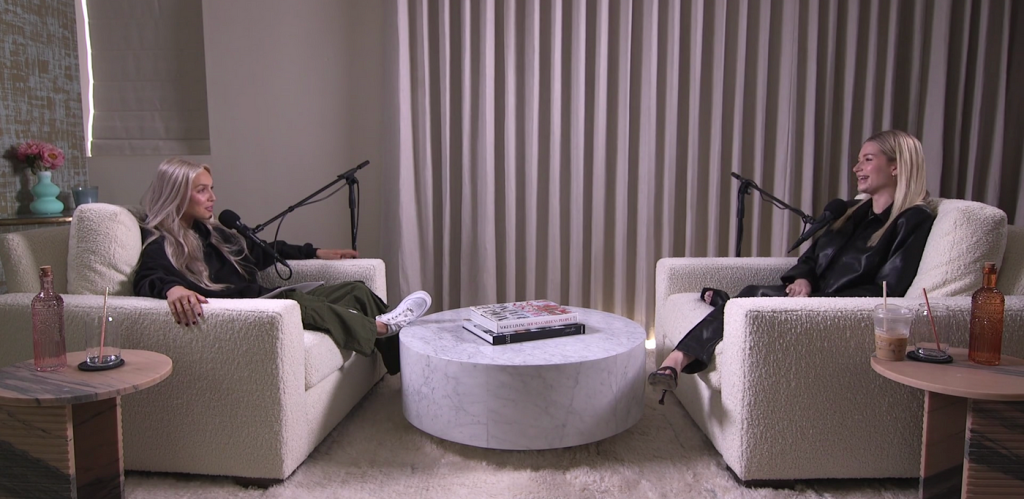Connected Thinking is Orchard's trends report, where we dissect the latest in culture, consumer, and healthcare to connect you to what's connecting us. If you've ever found yourself missing Myspace, hating influencers, or zoning out to podcasts - this issue's for you.
The trend
Readers of a certain age may remember the dawn of social media. Customising your profile to make it distinctly you. Posting an entire album from one night out with friends. Scrolling a chronological newsfeed.
If you’re nostalgic, you’re in luck. New social media app nospace launched last month, giving people a chance to relive OG social media; an era without filters, algorithms, and ads.
Its chaotic yet charming Y2K interface is highly reminiscent of Myspace. Users can change the colours and add music to their personal page, allowing people to create vibrant profiles that represent their individuality.
Text-only, real-time posts resemble early days of Twitter - and unlike Instagram's highlight reels, noplace encourages users to just share whatever they’re up to.
noplace capitalises on a collective yearning for social media to return to what it once was; a place to post and receive updates in real-time, to connect with friends, to show off your personality and individuality.

The impact
While there is currently no ability to advertise on noplace, its popularity can tell us a bit about what people are seeking out of social.
People want to be heard. Before creating a social campaign, take the time to understand your audience needs and interests. Listen to what they are saying, what topics they are talking about, and what information they are seeking to address their needs and avoid creating content in a vacuum.
People don’t want to be bombarded with ads. So don't make ads that look like ads. People don’t come to social to watch adverts; they come to see a familiar face, learn something new, hear a different perspective, be inspired or entertained. Content should reflect expectations of the platform.
People just want to connect with other people. Creator partnerships are a great way to diversify your content mix, build trust and credibility
The trend
The “influencer era” we once knew isn’t quite cutting it anymore. Success looks different, and consumers are craving something new. They want real, unpolished content, that fits seamlessly into their feeds and blends right into what they’re already consuming.
It marks an important shift from influencers to content creators. But how can you spot the difference between an influencer and a creator?
- Creator content can be much more irreverent. Think skits, behind the scenes content, and humour - rather than a polished or perfect aesthetic.
- As the name suggests, creators generally have more creative control over content, adding their own originality, personality, and signature style to anything they produce.
- Unlike influencers, who often rely on their follower count to establish credibility, creators tend to focus on quality of their work rather than on followers.

The impact
So what would a successful brand x creator partnership look like?
Prioritise creative freedom and allow creators the flexibility to express their unique style, but give guardrails and ensure briefing builds a good understanding of the campaign and brand goals. But avoid being overly prescriptive, which can lead to messaging that sounds forced and fails to connect with the audience.
Creator success is also measured by the depth of engagement and the uniqueness of their voice rather than by sheer numbers. They mightn’t necessarily have massive reach, but impact isn't always tied to scale. Instead of focusing solely on likes and followers, interrogate comments, shares, overall audience interactions and any feedback from the creator themselves to truly understand how content resonated.
The trend
A staggering 40% of newcomers prefer to watch podcasts rather than just listen, according to a 2023 YouTube survey. Why? Video adds a layer of engagement that audio alone cannot match. It’s not just about listening anymore; it’s about experiencing and connecting. Popular podcasters such as Dax Shepard (Armchair Expert), Alex Cooper (Call Her Daddy) and Shameless here in Australia video themselves and their guests to then upload to their YouTube channels, TikTok, and Instagram Reels to promote their new episodes.
Traditionally, podcast discovery relies largely on word of mouth or top chart lists. However, YouTube’s status as the second largest search engine in the world means podcasts now have an incredible opportunity to connect with new audiences. This platform, along with TikTok and Instagram, is revolutionising how podcasts are discovered and consumed.
The trend of video podcasts reflects a desire for a more intimate and engaging experience. Audiences can see the hosts’ and guests’ emotions, gestures, and nuances, enriching storytelling and creating a deeper connection between host, guest and viewer.

The impact
Video podcasts have a lot to offer; they are more engaging and allow for deeper connection with audiences, are better for SEO, and can be repurposed across different channels and formats. Of course, they are also more costly and complex to execute than audio-only formats.
But this trend reveals important truths about changing consumption habits, impacting content planning beyond just the realm of podcasts.
- Audiences increasingly crave real, unedited content. Video podcasts, with their often less polished and more genuine presentation, cater to that desire for authenticity.
- It suggests there's a growing appetite for longer-form, storytelling content, challenging the assumption that short-form video is the only way to engage viewers nowadays.
- People are willing to sit down and invest time in content that feels part of a series - much like a favourite TV show. As traditional TV viewership declines, video podcasts offer a new form of "appointment viewing."
This edition of Connected Thinking was curated by Orchard's Social Media Manager Annagh Weston and UX Designer Hana Truong.

